I found this picture on a newsletter email sent by Photobucket. I don't think they realized how useful this is for me...
It's basically a .gif of a watermelon explosion. Cool right?

Yep, the aftermath must have been messy. Well the purpose of this post is not to share the coolness of the animation (EDITED: Captain Cid has shown us that the animation comes from this video). I realized that it is very useful to use it to study the interesting light effects that are happening here.
And to do that, all I'm going to do is open the animation in GIMP (an opensource Photoshop) and save some of the frames separately. Let's pay attention to these:
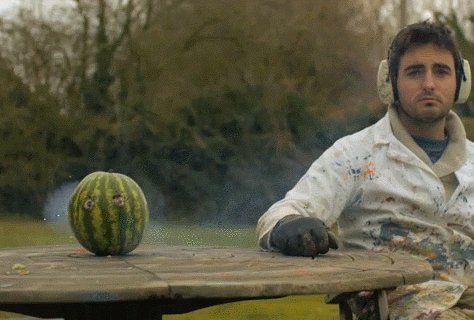
In miniature painting, OSL effects (Oriented Source Lighting) are very cool and quite difficult to achieve. This exercise will help us understand them better. Taking the above photo as our "base", check out how the colours change with the light coming from the watermelon (the explosion):
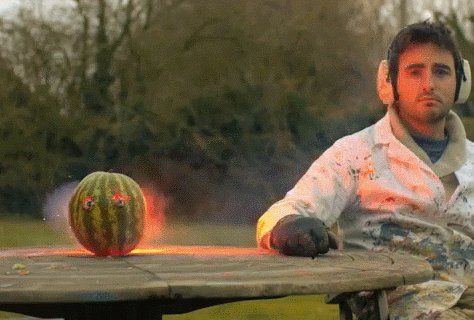
See how the reds start to bathe some specific parts of the table and clothes of the guy. Pay especial attention to the intensity of the red in each area! It's really interesting!

Interesting to see that the white of the guy becomes even more white, while the face becomes completely orange!

This pic is great to show how the light glows from within the watermelon, and shows from the cracks. Very bright yellows and oranges glow from within, and the watermelon is no longer green, but quite red actually (complementary of green, very discordant).

And the brighter it gets inside the watermelon, the more red its skin becomes, but in contrast with the light, and some areas that are brown, we can still see that its a green watermelon.
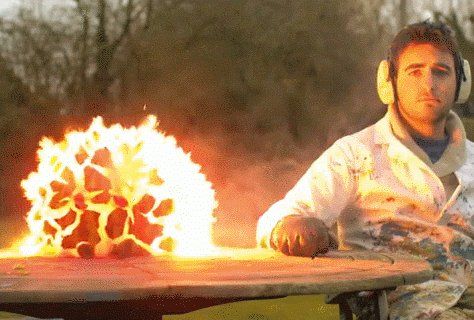
At this point, the effect of the orange light in the guy begins to fade.

The pieces of the watermelon spread away, and become more green as they escape from the light area.

At this point, the guy has no orange light on him.
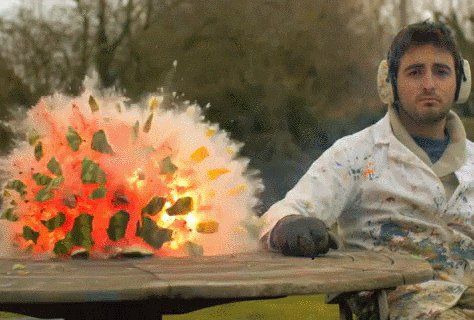
Man, this guy is corageous!
Well, I find this absolutely amazing. Studying this effect certainly opened my mind to a new world of possibilities. I was very surprised to see the white becoming even whiter instead of orange. Cool stuff.
I hope you enjoyed it! (and got something out of it of course)
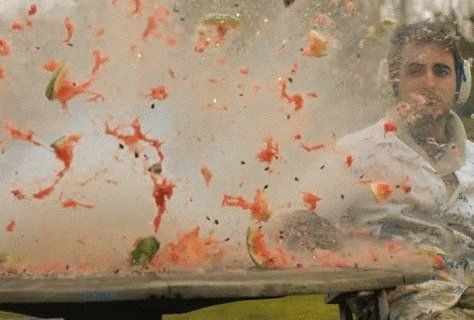
;)

12 comments:
I cannot condone posts that promote the idea of blowing up watermelons :D
Great post, I felt very entertained AND educated!
I will do some tests with German potatoes now.
OH! looks like a magma wattermelon!
Cool reference for mi future paintjobs.
Thanks folk :)
Now I want watermelon... thanks for that mate!
Very cool little explanation though.. now to wait for Micha's experiments with German Potatoes :)
It´s really cool !
Thanks for this informations !
Woooooooo!! I want to paint some of this!! Watermelon source effect for sure!!
Thanks for sharing this kinnda stuff!
Interesting how much orange carryover there is in the shadows on the far side of his neck. That reflection from his collar bounces a lot of warmth in to his cooler shadows
That awkward moment in which watermelon hits face. Everyone has lived that moment once in life
hahaha awkward indeed!! XD
That was VERY cool, thanks!
I believe that gentleman has big kahunas
Great post, thanks !
Isn't it object source lighting ?
Ok ok ok Great information and that's help lot of painter ;) But ! what I keep in mind about this...
" Fire in the hall "
Lot of thanks to remember me the thousand hours spend on Counter Strike ah ah ;)
i believe the reason for the white cloth becomes even more white is due to the fact of overexposure of camera rather than natural colour shift. it hints us that the impression of wut we used to "see", is wut camera captured, instead wut we "see" will our "naked eye".
Post a Comment